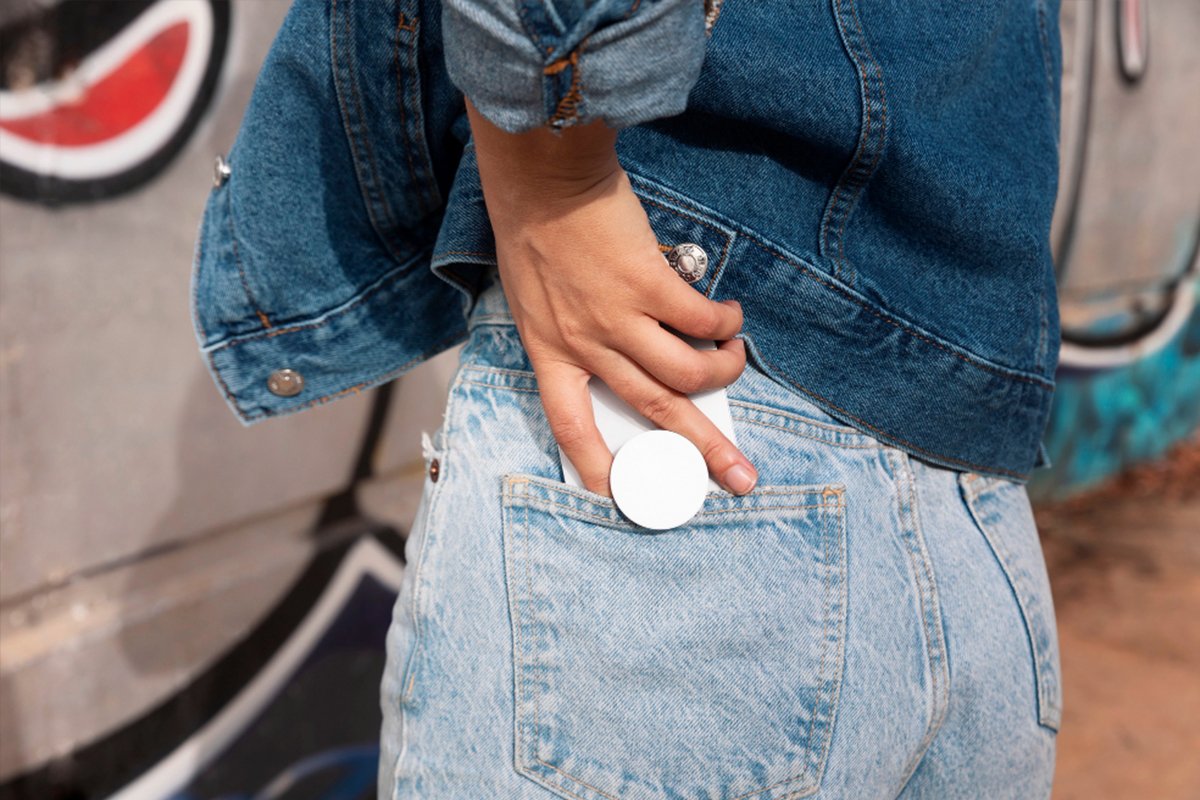The rise of mobile phones over the last 20 years has had a profound impact on fashion, not only through the design and functionality of clothing and accessories but also by shaping broader trends and lifestyle aesthetics. Here’s how mobile phones have influenced the fashion world:
1. Functional Clothing Design
- Pocket Design: With mobile phones becoming an everyday essential, clothes with functional pockets gained popularity. Designers began adding deeper, more accessible pockets in jeans, jackets, and even dresses, catering to the need for secure phone storage.
- Athleisure and Leggings: Athleisure and activewear brands introduced leggings and workout gear with built-in phone pockets, recognising that people wanted to carry their phones while staying hands-free.
2. Rise of Tech-Friendly Accessories
- Crossbody and Mini Bags: The demand for hands-free phone access led to a surge in crossbody and mini bags designed specifically to hold a phone and a few essentials. Luxury brands and streetwear labels alike embraced this trend, creating sleek, compact bags to accommodate the mobile-first lifestyle.
- Phone Cases as Fashion Statements: Phone cases evolved from protective items to fashion accessories. Designer brands like Louis Vuitton, Chanel, and Off-White created high-end, logo-adorned cases, while tech-savvy users looked for unique cases that reflected their style or personality. Cases even expanded to include multi-functional features, like cardholders or straps.
3. Influence on Aesthetics and “Tech-Chic” Style
- Streetwear and Urban Styles: Streetwear brands embraced the “tech-chic” look, creating designs that accommodated and highlighted mobile devices, including sling bags, utility vests, and harnesses designed for easy access to phones and gadgets.
- Minimalism and Utility: The minimalist and utility fashion trends were partly fueled by the sleek, pared-down aesthetics of smartphones. This led to an increase in monochrome outfits, streamlined silhouettes, and an emphasis on practical, utilitarian clothing that could comfortably accommodate phones and gadgets.
4. Social Media and Influencer-Driven Trends
- Fast Fashion and Social Media Influence: Platforms like Instagram and TikTok, accessed primarily on mobile devices, significantly accelerated the fast fashion cycle. Influencers showcase the latest trends, often on a daily basis, prompting fast fashion brands to replicate looks almost immediately. This led to a faster pace in trend adoption and shorter trend cycles.
- Selfie Culture and “Outfit of the Day”: The “selfie” and “OOTD” (outfit of the day) culture on social media influenced people to prioritise camera-ready outfits. This led to more vibrant, statement pieces and detail-oriented fashion, as people began dressing for how their outfits would appear in photos rather than just in person.
5. Colour and Print Choices for the Digital Age
- Bold and Photogenic Patterns: With outfit posts becoming ubiquitous, people began opting for bold colours, statement prints, and interesting textures that would stand out in photos.
- Makeup and Accessories: Makeup trends also shifted towards highlighter, contouring, and vibrant colours that show up well on mobile cameras. Accessories became an essential part of creating a complete “look” that translates well in digital photos, influencing styles such as layered necklaces, statement earrings, and bright nail art.
6. Rise of Wearable Tech
- Smartwatches and Tech Gadgets: Smartwatches and wearable techs like Apple Watch, Fitbit, and even phone-compatible jewellery pushed fashion brands to integrate technology into designs. The blend of tech and fashion has led to a demand for interchangeable watch bands, bracelets, and other accessories that add style to wearables.
- Phone-related Jewellery and Accessories: Mobile-friendly accessories like Bluetooth earrings or AirPods-compatible earrings gained popularity, creating new intersections between tech and fashion.
7. Influence on Fashion Shows and E-commerce
- Livestreamed Runway Shows: Mobile phones made fashion more accessible, with brands livestreaming runway shows and events. This mobile accessibility expanded the reach of high fashion, bringing it directly to consumers’ phones and inspiring brands to design with a global, digital audience in mind.
- Growth of Online Shopping and Instant Gratification: Mobile shopping apps revolutionised e-commerce, making it possible to shop on the go. Fashion trends could be instantly bought after seeing them online, leading to brands adopting “see now, buy now” models to cater to this instant gratification demand.
8. Environmental Consciousness and Transparency
- Sustainable and Ethical Fashion: As social media made information more accessible, mobile phones allowed consumers to learn about the environmental impact of fashion, sparking a shift towards sustainable, ethical brands. This created a demand for transparency and eco-friendly practices, which many fashion brands began to prioritise.
The Mobile Phone has redefined the Fashion Industry
The mobile phone has redefined fashion by reshaping both how we access trends and how designers respond to a tech-driven, mobile-first lifestyle. From functional design changes in clothing and accessories to influencing colour, style, and the pace of the fashion cycle, the mobile phone is now a central part of modern fashion culture.

















